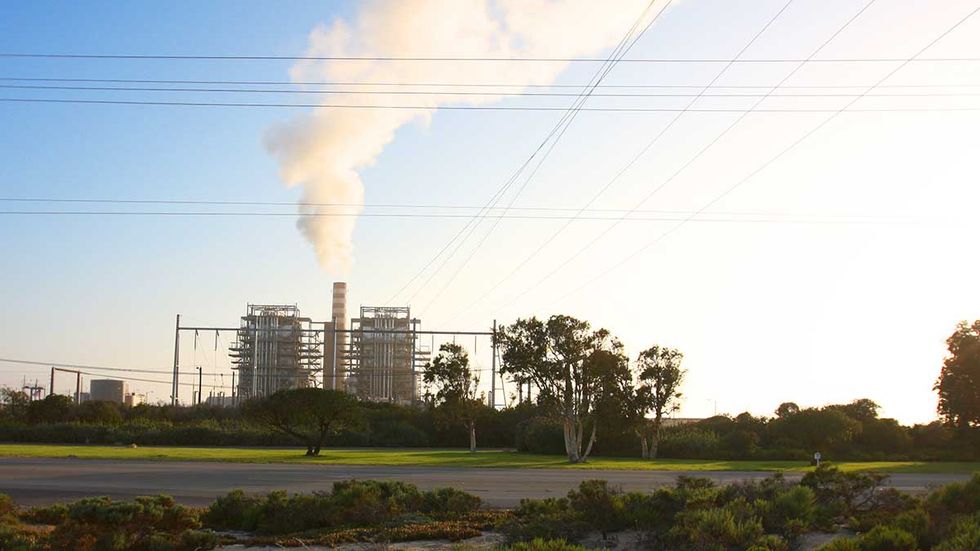
© 2024 Blaze Media LLC. All rights reserved.
Former President Obama is reaping the financial benefits from his political life by getting huge speaking fees, but his failed policies will haunt Americans for years to come.
Obama is scheduled to make $400,000 for speaking at a health care conference in September and a whopping $3.2 million for his foundation from a climate change speech in Italy this week.
While Obama cashes in on his fame, millions of Americans are suffering the consequences of his biggest policy achievements: Obamacare and his climate change agenda.
President Trump is working to unwind these disastrous policies, but a significant amount of damage was done. Obamacare’s financially unsustainable pre-existing condition insurance mandate is proving difficult to undo, and his climate change agenda fundamentally transformed our electricity generation infrastructure.
Obama’s regulatory assault on coal forced utilities to close coal-fired power plants, resulting in a dangerous lack of energy diversity in regions such as New England. The closing of coal-fired and nuclear power plants, coupled with cheap natural gas, made New England highly dependent on natural gas for electricity production.
According to ISO New England (nonprofit corporation responsible for electricity pricing and supply), in 2016, almost 50 percent of electricity was derived from natural gas, followed by nuclear at 31 percent, renewable 9.7 percent, hydroelectric 7.1 percent, and coal 2.4 percent. On the surface, New England electricity generation energy sources appear diverse and climate-change-friendly, but what’s not seen is a cause for concern.
The 2016 long-term reliability assessment by the North American Electric Reliability Corporation (NERC) — the regulatory authority for the electricity grid — warns New England about its energy diversity risk. The report concludes that New England is projected to have adequate power for the future, but it also stated the region’s “increased reliance on natural gas … indicate[s] a medium resource adequacy risk, particularly during the winter peak season.”
The natural gas dependency risk, as outlined in the report, is due to limited pipeline and natural gas storage capacity, meaning the energy infrastructure is lagging behind demand for this fuel.
ISO New England provides more details about the risk posed by the region’s dependency on natural gas. ISO notes the lack of pipeline infrastructure restricted the amount of natural gas needed for electricity production, and “its unavailability can pose a serious risk to the reliable supply of electricity, particularly when non-gas-fired resources are also unavailable.”
The electricity diversity problem for New England is going to get much worse because nuclear, oil, and coal power plants — the non-gas-fired energy resources — are closing due to EPA regulations, making the region more dependent on natural gas.
The problems outlined by NERC are not just theoretical. During the 2014 polar vortex, the supply of natural gas struggled to keep up with demand for both home heating and electricity generation because of limited pipeline capacity. The resulting spike in natural gas prices caused havoc for residents and businesses.
Meanwhile, environmental activists are fighting new pipeline construction. This month, eighteen environmental activists were arrested in Massachusetts at a construction site for a natural gas pipeline at the Otis State Forest, and New England elected officials are also resisting the energy infrastructure projects. Massachusetts Democrat Senators Elizabeth Warren and Ed Markey want a pipeline construction project at the Otis State Forest halted to allow residents in the area a rehearing on the permit.
The convergence of closing the non-gas-fired energy resources and environmental activism choking new natural gas pipeline supply is a recipe for disaster. Wind and solar power, Obama’s preferred sources of electricity, are not going to save the day. ISO New England analysis of renewable energy notes their growth but highlights their limitations including the projected capacity, transmission upgrade requirements, limited energy storage, and the problems posed by intermittent energy production.
Because renewable energy is intermittent, the electric grid needs backup power. ISO says, “New natural gas generators will likely fill this role, further exacerbating New England’s fuel-security challenge."
The New England region had already been moving toward more natural gas usage before Obama’s election. But Obama’s climate change agenda heaped political and regulatory pressure on traditional energy sources in New England, resulting in a lack of energy diversity that will bring New England electricity shortages and high prices for years to come.
Meanwhile, Obama will enjoy the riches of his retirement.
Want to leave a tip?
We answer to you. Help keep our content free of advertisers and big tech censorship by leaving a tip today.
Want to join the conversation?
Already a subscriber?
more stories
Sign up for the Blaze newsletter
By signing up, you agree to our Privacy Policy and Terms of Use, and agree to receive content that may sometimes include advertisements. You may opt out at any time.
© 2024 Blaze Media LLC. All rights reserved.
Get the stories that matter most delivered directly to your inbox.
By signing up, you agree to our Privacy Policy and Terms of Use, and agree to receive content that may sometimes include advertisements. You may opt out at any time.


